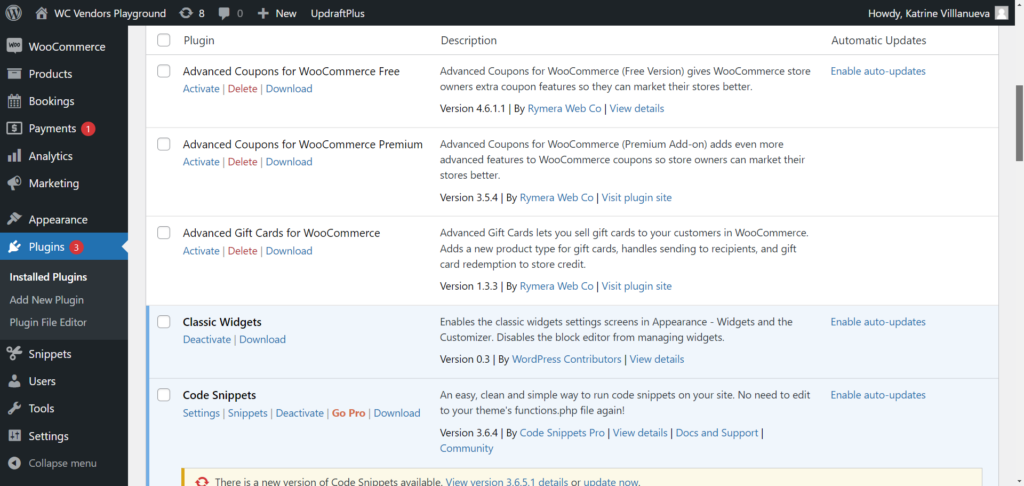
When setting up an online marketplace, integrating essential marketplace features. Aim for simplicity in design and functionality to significantly enhance the overall online shopping experience for users. This approach is not only practical but also strategic, as it helps streamline operations and improve user satisfaction.
Many believe that by mimicking the feature-rich environments of eCommerce giants, they’re setting their platforms up for success. However, when it comes to online marketplace features, less is often more.
Remember that the beauty of online businesses lies in their adaptability. Your platform naturally evolves as you gather insights from testing, accommodate changing user and vendor needs, and adapt to market dynamics. Put simply, nothing is set in stone, so don’t launch expecting things to stay the same forever.
In this post, we’ll explore how fewer marketplace features can enhance the online shopping experience. In addition, we’ll show you how you can effectively choose and manage these features. Let’s get right into it!
Understanding Marketplace Features
Marketplace features are specific tools and functions within a platform that facilitate transactions, interactions, and overall online shopping experience. These features can range from vendor storefronts and product listings to search functions, payment processing systems, reviews, ratings, and messaging services.
They are designed to enhance the user experience for both buyers and sellers. In addition, they facilitate transactions and interactions within the marketplace.
Depending on the platform’s focus and niche, marketplace features can vary widely. However, they usually include functionalities like:
- Vendor storefronts
- Product listings
- Search and filtering tools
- Payment processing
- Reviews and ratings
- Messaging systems
- … and more
Essentially, such features serve as your marketplace’s building blocks. After all, they let your platform operate smoothly and efficiently. Without them, it won’t be able to cater to the needs of its users.
Based on many years of user support experience, we’ve learned that one common pitfall new marketplace owners make is including too many features on their platforms. True, a well-thought-out marketplace business plan can enable a quick launch, sometimes within a matter of weeks. Unfortunately, piling on features can extend a platform’s launch timelines, sometimes to months or even years.
Choosing Your Marketplace Features
The elements that you incorporate into your online marketplace can encompass vendor-specific, customer-oriented, or administrative functionalities, all aimed at enhancing the online shopping experience. The choice depends on the particular feature you intend to introduce, each of which necessitates development or integration.
Simply put, the more plugins you use, the more marketplace features you get.
During your business planning phase, you should determine the minimum number of essential features required to launch your venture with a focus on improving the online shopping experience.
You should aim to get your platform online as swiftly as possible. And the fewer your features, the sooner your launch. Thus, prioritize features that will allow you to achieve this initial milestone, with plans to refine and expand functionality based on feedback from customers and vendors alike.
Automating your marketplace backend is key to enhancing the online shopping experience. This is where we recommend a thoughtful assessment of features that will streamline your operations. After all, the right features will allow you to allocate more time to business management. In short, always consider whether a specific feature will enhance or detract from your efficiency and productivity.
Selecting The Right Features For Optimal Online Shopping Experience
When planning your online marketplace, prioritize the features essential for operation, like basic functionalities for sellers and buyers, payment systems, and customer support. Assess customer needs through feedback or market research to identify the most valuable features. Ensure the features can scale with your business without requiring significant changes.
Manage your marketplace by consistently reviewing the utility and performance of its features, removing unnecessary ones based on usage data, and monitoring site performance to address any issues quickly. Lean towards fewer features to simplify updates, minimize downtime, and ensure security. A streamlined backend reduces technical issues, ensuring a stable and reliable platform.
Benefits Of Fewer Features: Streamlining Operations For Enhanced Online Shopping
- Easier Management – Fewer features mean simpler site management. With less to handle, you can focus on improving the quality of the services you offer rather than getting bogged down by numerous functionalities.
- Faster Load Times – Websites with minimal plugins and features load faster. Speed is crucial in the online shopping experience, as a delay of even a few seconds can lead to potential customers abandoning their carts.
- Reduced Complexity for Users – A simpler interface is usually more intuitive, making it easier for new users to navigate and complete purchases without feeling overwhelmed by numerous options and buttons.
- Quick Adaptation and Problem Resolution – With fewer components in the system, diagnosing and fixing problems becomes much simpler. This quick adaptation can be crucial for maintaining a seamless shopping experience for your customers.
The Relationship Between Plugins And Marketplace Features
The easiest way to detect an excess of marketplace features is the presence of numerous active plugins. When we come across support tickets where users have 80 or 90 plugins activated, it’s a clear indicator of too many features. Sure, you can technically run a multi-vendor marketplace with so many plugins. However, this doesn’t mean that you should.
Ultimately, having an overabundance of plugins means more work and complexity for managing the online shopping experience. For this reason, you should perform regular plugin audits and remove marketplace features that go unused. Constantly evaluate each feature by asking yourself two critical questions: Who is this feature for, and will they actually use it?
3 Major Consequences Of Using Too Many Marketplace Features
Additional marketplace features contribute to an increased workload for tasks like maintenance, site performance optimization, and more. The more you introduce to your platform, the more ramifications you can expect. Three of the major ones include:
1. Updates take time
Have you been working in the WordPress ecosystem for a while? Then you’re likely aware of the importance of maintaining an up-to-date site website.
You must make sure to thoroughly test every update before rolling it out to your site. Furthermore, you should have a staging environment in place so that you can safely assess every aspect of the update.
Unfortunately, having too many features can extend update durations, impacting the online shopping experience.
Remember that every plugin operates on a different release schedule. Furthermore, these are written by different developers with varying approaches. Such diversity can result in perplexing and unanticipated issues arising on your website. Therefore, when dealing with a substantial number of plugins that require monitoring and testing, the workload can quickly become overwhelming.
2. Performance suffers
The number of plugins you’re running can significantly impact website performance.
The fact is, all it takes is one poorly written plugin to make your website’s speed plummet. So when you use many plugins that suffer from shoddy coding, you only multiply your platform’s problems.
Sadly, even top-tier hosting can only do so much. If your website is badly constructed due to too many plugins and an unoptimized theme, it can negatively impact the online shopping experience, leading to poorer sales.
For these reasons, reduce the number of marketplace features you’re using. Furthermore, make sure to pick only the best plugins for your platform. Such strategies can serve as key steps towards maintaining both site performance and your peace of mind.
3. Conflicts cost money
As stated previously, every feature is implemented by a different developer. Each developer, in turn, has their own coding approach. These realities can potentially lead to conflicts between plugins.
Conflicts may arise from the outset. Alternatively, they could emerge during one of the frequent plugin updates you need to perform, impacting the online shopping experience.
Do you run updates directly on your live site instead of testing them out on a staging site? Then the consequences can render your site inoperable. The cost of fixing this problem can be expensive, not to mention your vendors can lose sales. Moreover, it can adversely affect your credibility and your ability to attract new vendors.

Tips On Improving Your Website’s Performance
Are you launching your first multi-vendor marketplace? Or have you been operating one for some time? Whatever the case may be, you must consider the number of features you really need to enhance the online shopping experience.
Perform a thorough audit to determine the marketplace features you genuinely need. Use your page analytics to identify which ones your platform constantly uses.
If you’re uncertain about a particular feature, consider temporarily disabling the plugin. Then, monitor your platform for any noticeable impacts. We often employ this approach ourselves as it provides a straightforward method of assessment.
Simply put, the fewer plugins you use, the easier it becomes to update and maintain your site, thereby enhancing the online shopping experience. We recommend only introducing new plugins and features as they become necessary.
Conclusion
Simplifying your online marketplace by selectively choosing features can greatly enhance the online shopping experience by making your site user-friendly, faster, and easier to manage. Focus on the needs of your users and the core objectives of your business to determine which features are truly necessary for your marketplace.
To recap, here are the three major issues you can expect when you use too many marketplace features:
For these reasons, you should reduce the number of plugins you use on your platform. In addition, thoroughly assess all marketplace features you’re interested in, and only use those that are absolutely necessary to your website.
What features are a must for you? Feel free to share your thoughts below and include links to the plugins or developer sites you recommend, as we’re always on the lookout for additional systems to suggest to our users.



